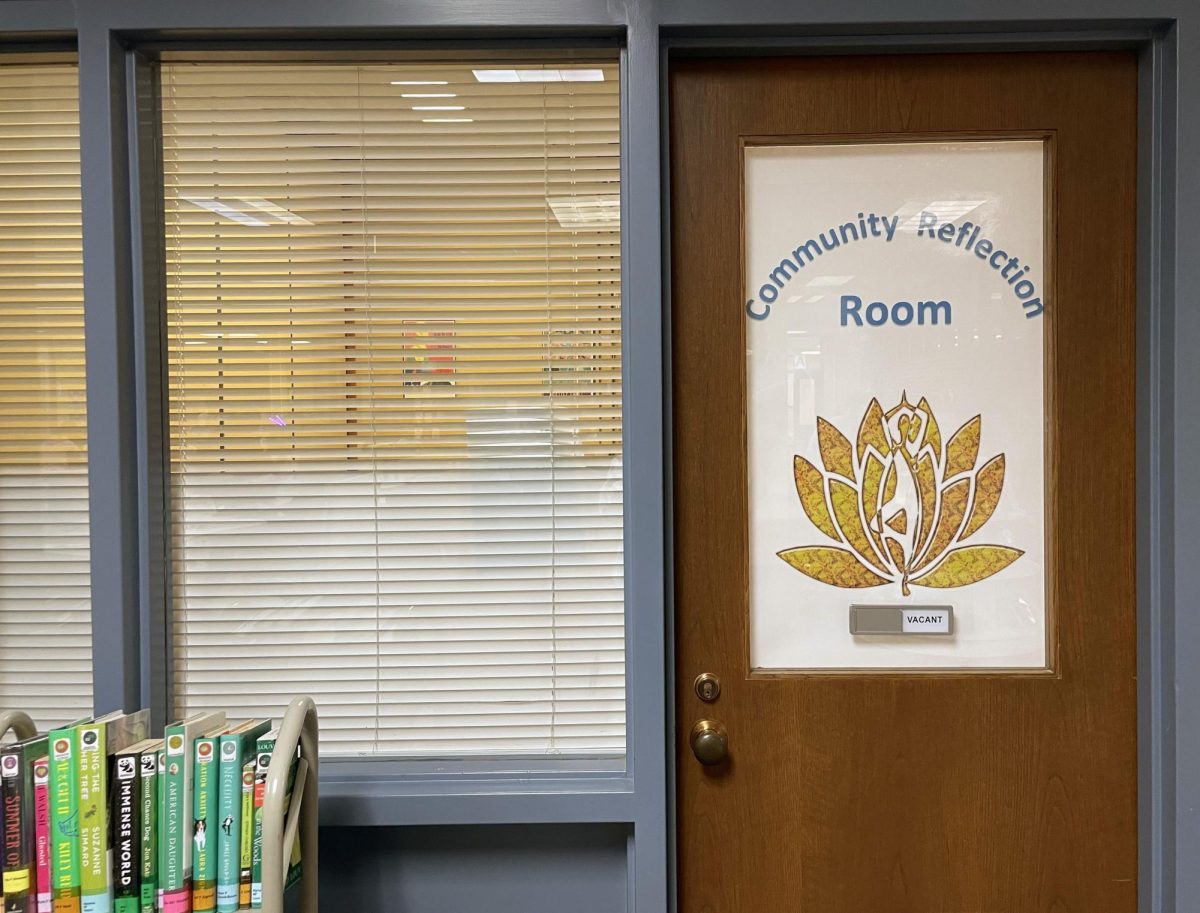AP test scores decrease for 2021
Administration partners with non-profit organization to increase AP enrollment
March 24, 2022
The College Board released its Annual Standardized Assessment Report in October of 2021. This document contains information about LT regarding standardized test scores, Advanced Placement (AP) enrollment, and AP Exam Score outcome. The report is also broken down into data regarding the various demographics at LT.
For the 2020-2021 school year, there was an overall drop in performance across all groups, but this can most likely be attributed to the COVID-19 pandemic as well as changes in testing format, according to the Annual Standardized Assessment Report.
Prior to 2020, AP tests had only been administered on paper; due to the pandemic, College Board had to administer shortened, online tests for the 2020 AP testing cycle. For the 2021 testing cycle, The College Board offered three testing windows to all schools. These testing windows incorporated a mix of both in-person, paper, and remote testing options.
“Two years ago, everything was online and the tests were about two-fifths as long [as they usually are],” Director of Curriculum and Instruction Scott Eggerding said. “Last year, the tests were given across six weeks, usually it’s only two. Each of the two weeks had a different format…In any case, no one trusts any of the data.”
In 2021, 1,166 LT students sat for 2,244 AP tests. This was a decrease in overall tests taken from 2020, as 2,394 total tests were taken by LT students that year. According to the Annual Standardized Assessment Report, this drop in tests could be attributed to a later testing window, the different testing format options, less overall instructional time in the school year, and colleges/universities rejecting AP scores less than a 5 (5 being the top score).
Equity and Excellence Report
The Equity and Excellence report is the percentages of a school districts’ sophomores, juniors, and seniors who scored at least a 3 on one AP exam, according to the AP Central website. This report also includes the percentage of the graduating class who scored a 3 or above on an AP exam at least once throughout their high school career.
For LT’s Class of 2021, 46.9% of students took and passed at least one AP exam, which equates to scoring a 3, throughout their time at LT. In addition, 15.2% of sophomores took and passed at least one AP exam, which is the most sophomores to ever do so at LT. However, the Equity and Excellence percentage dropped for juniors and seniors in 2021, and is predicted to drop for future classes of seniors due to LT’s offerings of various dual-credit courses.
“Schools rarely have a high percentage of their students taking AP,” Eggerding said. “College Board’s research says that students who take and pass at least one AP course graduate [college] quicker [than their peers who did not take an AP course].”
Out of all students who sat for an AP exam in 2021, 57.7% of Asian students, 54.5% of white students, 37.7% of Hispanic students, 28.6% of African American and 54.5% of multi-racial students passed with a score of 3 or above.
AP class demographics broken down:
At LT, white students are five times more likely than African American students, and two times more likely than Hispanic students, to enroll in an AP course. Multi-racial students are four times more likely than African American students, and slightly less than two times more likely than Hispanic students to enroll in an AP course. Asian students are six times more likely than African American students, and two times more likely than Hispanic students to enroll in an AP course.
In 2021, 1,433 out of 4,079 students (35.1% of the total LT student body) were enrolled in at least one AP course. Out of the white student demographic 1,144 out of 2,822 (79.8% of the total student body) and 42 out of 87 Asian students (2.9% of the total student body) took one AP class during the school year. One hundred ninety-five out of 926 Hispanic students (13.6% of the total student body) and 11 out of 136 African American students (0.8% of the total student body) took one or more AP courses. Forty-one out of 108 multi-racial students (2.9% of the total student body) registered for and took one or more AP courses throughout the entirety of the 2020-21 school year; no data was available for Native American/American Indian/Alaskan Native students.
From their own respective demographics, 40.5% of white students and 48.3% of Asian students registered for and took one or more AP courses throughout the whole of the 2020-21 school year. From LT’s Hispanic student demographic, 21.1% were enrolled in at least one AP class while 8.1% of African American students and 38% of multi-racial students were enrolled in at least one AP course.
Out of all students who sat for an AP exam, 57.7% of Asian students, 54.5% of white students, and 54.5% of multi-racial students passed with a score of 3 or above. 37.7% of Hispanic students and 28.6% of African American students who took an AP exam passed with at least a 3 or higher.
Why is the disparity in performance happening?
While Asian students tend to outperform other demographics, the disparity that exists between white, African American, and Hispanic students connects back to the issue of the Achievement Gap.
The Achievement Gap is defined as “the persistent disparity in academic achievement between minority and disadvantaged students and their white counterparts,” according to Andy Porter of the University of Pennsylvania Graduate School of Education News. What this means is that African American students and Hispanic students tend to perform lower than their white peers in a school setting (meaning standardized testing, course choice, overall performance).
This gap is also referred to as the “Opportunity Gap,” referencing the idea that many minority students do not have equivalent access to the same educational opportunities as white students. This is due to uncontrollable factors such as “race, language, economic, and family situation,” which results in overall lower performance, according to the Close the Gap Foundation website.
This difference in performance is not wholly attributed to the school environment, according to the same website. The disparities in learning opportunities occur before a student is even enrolled in an educational institution. For example, one student might be exposed to only English prior to school, while other students are exposed primarily to Spanish, Chinese, or other languages besides English. This already puts the student behind, as they have no experience with the dominant language of the American school system, English. Thus, the school will typically place the student into an English as a Second Language (ESL) program.
ESL programs are programs of “techniques, methodology and special curriculum designed to teach ELL (English Language Learner) students English language skills, which may include listening, speaking, reading, writing, study skills, content vocabulary, and cultural orientation,” according to the U.S. Department of Education website. “ESL instruction is usually in English with little use of native language.”
“[In ESL class…] they teach how to structure sentences correctly and help me practice,” Dalia Silva Trujillo ‘22 said. “I would like to take an AP class though, because it would challenge me and help me in the future. If teachers could help make the classes clearer for me or give me some more time to do homework and exams, that would help me feel more confident.”
Students also may not have equal access to private tutoring due to individual financial situations. This creates a disparity between students, as some have access to outside help to aid them with class work, while others do not have that opportunity. If a student needs tutoring and they are unable to access outside services, this could potentially lead to a lower performance than their peers.
“There is a definite feeling that AP isn’t for everyone, and whether that’s the vibe that the school gives off or the teachers or the students or counselors, there is to some degree a perception of what AP should be and who should be in AP,” Eggerding said. “We have some parents who understand the path and are very deliberate in getting their kids where they need to be…There’s other kids who don’t have that experience because maybe their parents didn’t go to college, or maybe their parents did not navigate this themselves, and they didn’t take AP either, so they don’t really know what it is.”
What LT is doing for change:
LT is planning on implementing the Equal Opportunity Schools (EOS) program in order to ensure that all demographics have equal opportunities to pursue rigorous coursework while enrolled at LT, Eggerding said.
Equal Opportunity Schools’ mission is to ensure that students of color and low-income students have equitable access to America’s most academically intense high school programs and succeed at the highest levels, according to the EOS website.
“Academic curricular expectations need to be raised across the board especially in ninth and 10th grade levels,” Assessment of Coordinator and Research Katherine Smith said. “If we can start to identify kids that have already excelled in prep classes and move them up to AP and honors classes, I think we could start to see that performance change.”
The philosophy of the EOS program is that a school’s AP class makeup should reflect the demographics of the school, Eggerding said. This program involves a process of identifying students who would typically not be enrolled in AP courses and allowing, along with encouraging, them to register for these courses. LT has already sent out a survey regarding EOS, hosted luncheons for the identified students, and is planning on offering various support options for them in the upcoming school year.
“All these kinds of things are basically designed to tell kids who may have gotten the message, both directly and indirectly from their school, ‘that you are not AP material’ that, ‘oh you actually are and you can actually do quite well,’” Eggerding said. “You’re missing and we want you there.”
LT has currently registered 163 students for higher level courses than they are currently enrolled in and has identified 285 students who fall into various categories covered by EOS, Eggerding said.
“Every student should have the opportunity to succeed,” Eggerding said. “Our goal, throughout the changes we have made to our curriculum, is that all students should learn more and not only should they learn more, [but] we need to do what it takes for them to have that opportunity.”






















![Movie poster for '[Rec]" (2007).](https://www.lionnewspaper.com/wp-content/uploads/2023/04/rec-640x900.jpg)


